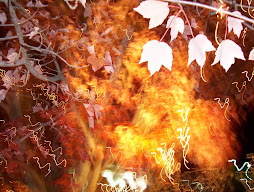skip to main |
skip to sidebar
From The Daily Kos. Forget about Greece or Portugal or Ireland: It looks like Spain's gonna blow first.
You wouldn't know it from the sub-rosa treatment being given to it in America, but Spain is currently experiencing something like the Arab Spring. As one Spanish author put it:
Madrid isn't Tahrir, but the "virus" is the same: an abundance of youth without hope, doomed to a declining market modernized by cutting social rights and jobs, with the only prospect long-term trash contracts. There are thousands of stories of men and women who can't find a position, who suffer. No one speaks of them. The party line prevails, that of the others, of bureaucratese, of press conferences without questions, of the untouchables.
From the coverage that Spain does receive in American media, you would think that the government is one of the more deeply indebted in the EU. However, this is simply false. Eurostat data (see below) shows that Spain has a moderately high current government deficit, but has an actual sovereign debt substantially lower than France, Germany, or the UK.
Spain doesn't have a government debt problem. It does have an enormous private debt problem. Household debt is part of the problem, but is far overshadowed by business debt. The reason that the Spanish government faces such a premium when financing debt is that the banks doing the lending expect the government to be called upon to assume this private debt in the near future.
Now that we know the truth about where the debt lies, we need to ask who holds it. Yes, there is a great deal of domestic exposure here: Spanish banks holding Spanish debt. But, when you look about the Merkel-Sarkozy axis of austerity, the pattern of Spanish debt holdings becomes all the more suspect.
French and German banks are heavily exposed to Spanish private debt. The Spanish government is being called upon to assuming this debt, and implement austerity measures to pay the bill, as a means for Merkel and Sarkozy to protect their nation's haute finance. It's the banksters stupid!
But it's the Spanish public paying the bill.
..
Unemployment is a peculiar Spanish bane. The country regularly has a rate higher than the rest of the continent. The overall rate stands at more than 20%. The collapse of the real estate market and declines in tourism help explain this in part. More serious is the fact that much of the country has a business class intent on competing on low labor costs, even though this is out of step with the reality of modern Spain. As bad as this has been for country as a whole, the burden on young workers has been hardest. Youth unemployment in the country lies at nearly 50%
Angry, unemployed youth are the fuel that lit the Arab Spring. And, Spain has them in spades. That shit is going sideways now doesn't seem like it should be a surprise.
Spain's descent into chaos will be presented as astonishingly fast, but the contributing elements have been percolating for some time now. The first European domino is rocking..
Brave, or Stupid? East Asian leaders meet in Fukushima
File Under: "Since we're not doing anything else to help.." UN chief launches study of nuclear accident
The United Nations will undertake a systemwide study on the implications of the accident at the Fukushima Dai-ichi nuclear power plant in Japan, Secretary-General Ban Ki-moon said Friday.
Several agencies will prepare a report addressing the effects of nuclear safety in areas including environment, health and food security. It is to be presented at a high-level meeting on nuclear safety and security on Sept. 22 during the General Assembly in New York.
The U.N.'s on it. Stop worrying..
Katsushika Toukyou radiation dose experts remeasured five times the government announced Google translate via Rense. Rough translation. Here's the most coherent excerpts:
April 19, the Ministry of Education, the provisional measure of radiation dose on the playground when school "20 mSv per year" have been established. In contrast, "Japan Medical Association" is May 12, "for a child, there should be more careful for the country as a" reduction of the number, the opinion announced more restrictive standards that call for .
Begin with ministry standards, the International Commission on Radiological Protection (ICRP) issued on March 21 that "as a reference level after the convergence of an emergency like this, from 1 to 20 mSv / year in the range of You can also think "It's based on a statement that the ministry of 1 to 20, is taking its maximum value.
Humidity, heat, radiation in reactor buildings Video or article from NHK via Rense.
At the crippled Fukushima Daiichi nuclear plant, high radiation levels and humidity in the reactor buildings are hampering efforts to stabilize the reactors. The utility urgently needs to improve conditions so that people can work in the buildings.
..
At the No.2 reactor they found peak radiation levels of 50 millisieverts per hour. They also experienced high humidity and intense heat, which limited the work there only to 15 minutes.
At the No.3 building the team detected 160 to 170 millisieverts of radiation per hour near a pipe connected to the reactor. The pipe was to be used to inject nitrogen to prevent a hydrogen explosion.
The KBS photographing supervision and others of earthquake disaster collection of data and being bombed allowable limit it exceeds Another rough translation..
The Seoul 11 day combined news>Photographing supervision and others of the KBS image production bureau which undertook the collection of data of the east Japanese large earthquake disaster which occurs in March, the radiation dose which exceeds reference level having been bombed you understood to 11 days.
Having been exposed 11 days, the team all had radiation levels exceeding the allowable limit. And this is day what again/ 71? Is that right? That's pretty far away from 11, don't you think?
Giant barge arrives at Fukushima plant to store radioactive water
A giant water-storage barge has arrived at Japan's quake-hit Fukushima Daiichi nuclear plant to store highly radioactive waste water from the basement of a reactor building, Kyodo news reported on Saturday.
..
Tokyo Electric Power Co. (TEPCO) will use the 136-meter-long, 46-meter-wide Megafloat as a storage site for contaminated waste water leaked from reactor buildings.
And:
TEPCO engineers have been pouring water into the reactors water to cool them in a bid to gain access to reactor buildings to restore the damaged cooling systems.
They have now scrapped the plan and are trying to create a cooling system by circulating the water which is already in the reactors.
Couple things, here.. I'm really hoping this is a temporary situation.. The idea of storing radioactive water in a barge On The Water is bothersome. Sure, nothing will happen, right?
How much water will can this barge contain? No mention in the article.
And:
Re-circulating the existing radioactive water? Aren't there still leaks they haven't found? .
Atmosphere Above Japan Heated Rapidly Before M9 Earthquake Wow.. From Technology Review, via Godlike Productions. Excerpts:
Geologists have long puzzled over anecdotal reports of strange atmospheric phenomena in the days before big earthquakes. But good data to back up these stories has been hard to come by.
In recent years, however, various teams have set up atmospheric monitoring stations in earthquake zones and a number of satellites are capable of sending back data about the state of the upper atmosphere and the ionosphere during an earthquake.
..
Today, Dimitar Ouzounov at the NASA Goddard Space Flight Centre in Maryland and a few buddies present the data from the Great Tohoku earthquake which devastated Japan on 11 March. Their results, although preliminary, are eye-opening.
They say that before the M9 earthquake, the total electron content of the ionosphere increased dramatically over the epicentre, reaching a maximum three days before the quake struck.
..
It certainly makes sense that the lithosphere, atmosphere and ionosphere are coupled in a way that can be measured when one of them is perturbed. The question is to what extent the new evidence backs up this idea.
Maybe "Earthquake Weather" is a reality? Maybe also.. Might this be a limited hangout explanation obfuscating the influence of HAARP? Note that none of these three phenomena preclude the other, and any combination of all three could be the closest to reality.
Melted fuel in Reactor No. 3 appears to have burned through pressure vessel — Loaded with rods containing plutonium Energy News, via Godlike Productions. Excerpts:
From Meltdowns also likely occurred at No. 2, No. 3 reactors of Fukushima plant, Asahi Shinbun, May 18, 2011:
Ex-SKF via Rense. Excerpts:
And like the No. 1 reactor, the melted fuel appears to have created holes in the pressure vessel of the No. 3 reactor, according to the data of Tokyo Electric Power Co. released May 16. [...]
..
According to the data, the pressure in the pressure vessel of the No. 2 reactor dropped at 6:43 p.m. on March 15. A similar drop in pressure also took place at the No. 3 reactor at 11:50 p.m. on March 16.
..
Those declines were apparently the result of holes made in the pressure vessels. [...] it appears that melted nuclear fuel formed new holes in the pressure vessels. [...]
No. 3 reactor… is the only one at the site loaded with a mixed fuel known as mox, for mixed oxide, which includes reclaimed plutonium. -NYTimes
Asian Stocks Increase on Takeover Speculation, Tokyo Electric Nuclear Plan File Under: Financial Happy Talk, meaning nothing..
Asian stocks rose, driving a regional benchmark index higher for the first time in five days, amid improved earnings and merger-and-acquisition speculation. Tokyo Electric Power Co. gained after it presented a plan for stabilizing a stricken nuclear-power plant.
Take Two: Japan business pessimism eases: Reuters Tankan Sheesh. Reuters. Excerpts:
Japanese corporate pessimism eased in May in a sign the economy may have started bottoming out two months after the March 11 earthquake, a Reuters poll showed, but companies remain cautious over the outlook as supply bottlenecks keep constraining output.
The monthly poll, which has a 95 percent correlation with the Bank of Japan's closely watched quarterly tankan survey, marked the first improvement in corporate confidence since the quake, supporting the view that the central bank will keep its policy unchanged when it meets this week.
“Situation at Fukushima out of control” Video from Russia Today, via Rense.
Video: Fukushima Daiichi, The Inside View From The Wall Street Journal. Excerpts:
Tokyo Electric Power Co. Tuesday released a 13-minute video of the crippled Fukushima Daiichi nuclear power plant – one of the longest clips that reveals a glimpse of the work taking place inside the troubled facility.
The silent reel, shot on May 6, shows workers spraying parts of the damaged reactors and suiting up in protective gear in the specially constructed earthquake-resistant emergency headquarters located several hundred meters from the reactors.
Hiroaki Koide of Kyoto University: "Melted Core Outside the Containment Vessel"
Hiroaki Koide of Kyoto University Research Reactor Institute is quoted by Mainichi Shinbun as saying that the melted core of the Reactor 1 is not just out of the Reactor Pressure Vessel but out of the Containment Vessel.
And:
From Mainichi Shinbun, Koide's comments only (5/16/2011):
According to TEPCO, the data analysis shows that damage to the RPV is not extensive. However, Koide thinks "The RPV has been completely damaged, the melted core bore a hole at the bottom of the Containment Vessel, causing the large amount of contaminated water to leak into the ground beneath the reactor building."
Scientists Will Track Fukushima Radiation To Study Ocean Currents Forbes, via Rense.
Oceanographers know that the Kuroshio current sweeps west from Japan to the Central Pacific and then toward the U.S. West Coast, but they’re less certain how it behaves after it branches toward Alaska and California.
Radiation still leaking into the sea from the damaged Fukushima nuclear power plant will help them document the ocean’s circulatory system.
..
Scientists have predicted that Fukushima’s longer living isotopes—such as cesium-137, with a half-life of 30 years—will reach Hawaii in about a year and the coast of California in two to three years. By that time, the isotopes should be significantly diluted from mixing with ocean water. (Sure. Even though we have no realistic estimation of this event's duration, McMahon states the radiation will be "significantly diluted" by mixing with the ocean. This is true, by definition. Will the water be safe? Hell no..)
Radioactivity at intake of No.3 reactor rises NHK via Rense. Excerpts:
Radioactive materials in the ocean near the Fukushima Daiichi nuclear power plant rose to 3,300 times the legal limit on Sunday.
Tokyo Electric Power Company says it measured 200 becquerels of cesium-134 per cubic centimeter on Sunday morning near the water intake of the No. 3 reactor. The level was higher than on the previous day, when it was 2,300 times the legal limit.
220 becquerels of cesium-137 per cubic centimeter was also detected. At 2,400 times the legal limit, the level exceeded the one found the day before.
On Wednesday, highly radioactive water was found leaking into the ocean from a pit located near the water intake of the No. 3 reactor. 32,000 times the legal limit of cesium-134 was detected there.
Was Fukushima a China Syndrome? From Time(!). Hey, thanks for showing up--Two months later.. Excerpts:
The China Syndrome refers to a scenario in which a molten nuclear reactor core could could fission its way through its containment vessel, melt through the basement of the power plant and down into the earth. While a molten reactor core wouldn't burn "all the way through to China" it could enter the soil and water table and cause huge contamination in the crops and drinking water around the power plant. It's a nightmare scenario, the stuff of movies. And it might just have happened at Fukushima.
Forensic Medical Global Analysis Of Fukushima Daiichi Crisis From Rense. Excerpts:
The shroud of mystery is dropping and the horror of all three reactors having a complete core breach, reactor cooling pool to Unit 4 blown sky-high and Arne Gundersen analysis of MOX Unit 3 cooling pool going hypercritical with a hydrogen trigger nuclear explosion. Up to 50 km away from the plant debris with highly radioactive soil has been revealed. The Pacific Ocean is a TEPCO Fukushima dumping ground, with the Humbolt or Black Current carrying toxic death to Alaska, Canada, Washington, Oregon, California and Baja California.
..
We had a flurry of concern early, but now the sound of a slumbering population is deafening with apathy and fanciful thoughts that all is well in our air, food, water and we should listen to the EPA. Now, the radiation on my North County, San Diego, CA, Inspector PLUS shows daily waves of radiation with CPM climbing and falling over hours with low 20s to middle 50s when it rains, mists or just when a new cloud of nanoparticles arrives fresh from the inept exploits of TEPCO in Northern Japan.
The new enervated Tepco Sentaku Magazine via Godlike Productions. Further evidence as to TEPCO's and the Japanese Government's homicidal negligence towards the rest of the World. Thanks, jerks.. Excerpts:
With the onset of the Fukushima No. 1 nuclear power plant crisis following the March 11 Tohoku-Pacific earthquake, radioactive substances continue to seep into the sea, air and soil. Residents within a designated proximity of the plant will likely have to live away from their homes a long time. The prospect of the situation returning to normal is nowhere in sight.
Although the government and Tokyo Electric Power Co. (Tepco), the operator of the ill-fated plant, have worked out plans to pay compensation to victims of the crisis, it appears they are interested less in protecting people from radiation than in preserving the existing semi-monopolistic system of the power industry and in enabling the government of Prime Minister Naoto Kan to survive.
Tepco is now attempting to divert public opinion away from its responsibility for the nuclear crisis to the need to secure a stable supply of electricity. Shortly after its Fukushima power station was damaged, the company announced that it would have to impose "planned rolling power outages" to make up for reduced power generation.
By emphasizing that abandoning nuclear power generation would lead to prolonged outages, Tepco sought to convince the public that it is better to rely on nuclear power generation than endure power outages and that it is time to help Tepco with public funds. This is an ultimate form of defiance by Tepco.
Industrial circles, especially manufacturing, were thrown into a panic by the government's plan to make it mandatory for major electric power users to reduce consumption by 25 percent this summer. This could be a matter of life and death for manufacturers whose activities are already hindered by the disruption of production at component suppliers located in areas devastated by the earthquake and tsunami. This fear has served to change the attitude of the business community from one of criticizing Tepco to seeking stable power supply.
Japan keeps Fukushima shutdown target despite setbacks
Japan on Tuesday will unveil new plans to contain the crisis at a crippled nuclear plant after admitting it faced more serious challenges than first disclosed, but was expected to stick to a timetable for bringing the reactors under control by January.
More than two months after the worst nuclear disaster since Chernobyl, officials say the risk of another explosion at the Fukushima plant has declined but each step toward taking control has been matched by new setbacks. The crisis has also prompted a blank-slate review of Japan's national energy policy.
..
Prime Minister Naoto Kan has said the timetable would be unchanged and other officials have sketched out the new methods which would in particular focus on how to clean up the large amount of water contaminated by radiation.
The timetable for taking control of the Fukushima Daiichi crisis has been politically charged and faced skepticism from the start.
Japan widens evacuation outside plant zone Dawn.com/World. Excerpts:
TOKYO: Japan on Sunday started the first evacuations of homes outside a government exclusion zone after the March 11 earthquake and tsunami crippled one of the country`s nuclear power plants.
Some 4,000 residents of Iidate-mura village as well as 1,100 people in Kawamata-cho town, in the quake-hit northeast, began the phased relocations to public housing, hotels and other facilities in nearby cities.
Their communities are outside the 20-kilometre radius from the Fukushima Daiichi power plant, officially designated as an area of forced evacuation due to health risks from the radiation seeping from the ageing and damaged plant.
The government told people in communities such as Iidate-mura they had to leave, but authorities are unlikely to punish those who choose to stay.
..
Although Iidate-mura and Kawamata-cho are 30 kilometres away from the plant, they have consistently received high amounts of radioactive materials due to wind patterns.
The Fukushima Nuclear Disaster in Perspective From Scoop/NZ. Excerpts:
First I want to present this report, produced by the New York Academy of Sciences, a report on Chernobyl. It can be downloaded.(2) They translated 5,000 articles from Russian for the first time into English. It seems that nearly a million people have already died as a result of Chernobyl, despite what the WH0(3) says and the IAEA.(4) This is one of the most monstrous cover-ups in the history of medicine. Because everybody should know about this.
Then we extrapolate through to Japan. Japan is by orders of magnitude many times worse than Chernobyl. Never in my life did I think that six nuclear reactors would be at risk.(5) I knew that three GE engineers who helped design these Mark I GE reactors, resigned because they knew they were dangerous.(6)
So Japan built them on an earthquake fault. The reactors partially withstood the earthquake, but the external electricity supply was cut off, and the electricity supplies the cooling water, a million gallons a minute, to each of those six reactors. Without the cooling water, the water [level] falls, and the rods are so hot they melt, like at Three Mile Island, and at Chernobyl.
So the emergency diesel generators, which are as large as a house, got destroyed by the tsunami, so there is no way to keep the water circulating in the reactors.(7) Also, on the roofs of the reactors, not within the containment vessel, are cooling pools. Every year they remove about thirty tons of the most radioactive rods that you can possibly imagine.(8) Each one is twelve feet long and half an inch thick. It gives out so much radiation, that if you stand next to it for a couple of minutes, you'll die. Not drop dead. Remember Litvinenko, the Russian, who got poisoned by polonium?(9) You'll die like that, with your hair falling out, and bleeding with massive infection, like AIDS patients die.
And [the spent fuel rods] are thermally hot, so they have to be put in a big pool, and continually cooled. The pool has really no roof.
There have been three hydrogen explosions, blowing off the roof of the building, not the containment vessel of the core, but the roof. And exposing the cooling pool.(10) Two of the cooling pools are dry. They have no water in them. Meaning that the nuclear fuel rods are covered with a material called zirconium. When zirconium is exposed to air, it burns, it ignites. Two of the cooling pools at this moment are burning. In the cooling pools are many times, like 10 to 20 times more radiation than in each reactor core. In each reactor core is as much long-lived radiation as would be produced by a thousand Hiroshima-sized bombs. We are dealing with diabolical energy.
Plutonium detected in rice paddy by a food manufacturer more than 50 kms away from Fukushima power plant: Physics Forums via Rense. Excerpts:
Additionally, a certain food manufacturing company conducted a survey by themselves. In a rice field is more than 50kms away from the Fukushima power plant, it was found that there was very high radiation that is very different to what the government released.
High density plutonium is in the rice field that was mentioned previously.
According to this food manufacturing company, they currently don't announce these results due to the large influence* that this rice field has high concentration of plutonium.
* Note: It is not mentioned what the influence is but it implies they do not currently release the information as it may have an impact on the media/public.
Mitsubishi Electric net profit drops by 75.5% to $94 million in March quarter The Economic Times. Excerpts:
TOKYO: Japan's Mitsubishi Electric said Monday its net profit plunged 75.5 percent to 7.6 billion yen ($94 million) in the quarter to March in the wake of a massive quake and tsunami.
Its operating profit for the quarter edged upward to 41.2 billion yen from 39.9 billion yen as sales remained unchanged at 1.04 trillion yen, the electronics manufacturer said.
"Due to the Great Eastern Japan Disaster, operations at some of our plants came to a halt, while planned blackouts lowered the operating rate," Mitsubishi said.
The reverberations will continue for years.
Cores Damaged at Three Reactors The Picture becomes clearer, sadly.. The Wall Street Journal. Excerpts:
TOKYO—Substantial damage to the fuel cores at two additional reactors of Japan's Fukushima Daiichi nuclear complex has taken place, operator Tokyo Electric Power Co. said Sunday, further complicating the already daunting task of bringing them to a safe shutdown while avoiding the release of high levels of radioactivity. The revelation followed an acknowledgment on Thursday that a similar meltdown of the core took place at unit No. 1.
Workers also found that the No. 1 unit's reactor building is flooded in the basement, reinforcing the suspicion that the containment vessel is damaged and leaking highly radioactive water.
..
The operator, known as Tepco, said the No. 1 unit lost its reactor core 16 hours after the plant was struck by a magnitude-9 earthquake and a giant tsunami on the afternoon of March 11.
The pressure vessel a cylindrical steel container that holds nuclear fuel, "is likely to be damaged and leaking water at units Nos. 2 and 3," said Junichi Matsumoto, Tepco spokesman on nuclear issues, in a news briefing Sunday.
He also said there could be far less cooling water in the pressure vessels of Nos. 2 and 3, indicating there are holes at the bottom of these vessels, with thousands of tons of water pumped into these reactors mostly leaking out.
..
Tepco found the basement of the unit No. 1 reactor building flooded with 4.2 meters of water. It isn't clear where the water came from, but leaks are suspected in pipes running in and out of the containment vessel, a beaker-shaped steel structure that holds the pressure vessel.
The water flooding the basement is believed to be highly radioactive. Workers were unable to observe the flooding situation because of strong radiation coming out of the water, Tepco said.
Japan's thin, white security blanket L.A. Times. Excerpts:
Leaning against a wall in the busy Akihabara electronics district here, Tomomitsu Funayama was enjoying a do-nothing day off from his architectural job. Yet he looked less like a slacker than a surgeon late for a big operation.
For years, the 26-year-old Tokyo native had resisted the urge to follow the millions in this city who don face masks during the "wheeze and sneeze" hay fever and flu seasons to protect against allergens and help stop the spread of germs.
This year, Funayama joined the pack. But it wasn't pollen that concerned him; it was radioactive isotopes.
"I'm worried about the air in Tokyo," he said. "The radioactivity is all around us. Who knows what we're breathing in?"
Japan earthquake: Dealing with mountains of debris BBC News Asia Pacific. Excerpts:
According to the environment ministry there are 20 million tons of debris, although some estimates have put the figure higher. In Miyagi prefecture about 146,000 vehicles have been damaged or destroyed - one in 10 of the total.
..
The aim is to remove all the waste that is getting in the way of daily life by August - clearing roads and so forth - but huge amounts are left on private property too.
In Ishinomaki, diggers have been used to begin to gather the wreckage into huge piles.
The centre of the city is now dominated by a gigantic stinking mound of splintered wood, clothes and metal, the same height as a three or four-storey building and several hundred metres long.
..
Dealing with the wreckage left behind by the disaster is likely to take a very long time - Japan's government is yet to estimate how long.
Japan reactor leak 'serious setback' Al Jazeera. Excerpts:
One of the reactors at Japan's crippled nuclear power plant has been damaged more severely than originally thought, officials said, a serious setback for efforts to stabilise the radiation-leaking complex.
The data released on Thursday also showed that the water level in the core of Unit 1 at the Fukushima Daiichi plant is much lower than previously thought, leaving the portion of the fuel rods still intact fully exposed.
Other fuel has slumped to the bottom of the pressure vessel and is thought to be covered in water.
The findings also indicate a greater-than-expected leak in that vessel. Radioactive water pouring from troubled reactors has flooded around the complex, hindering work to bring the plant under control.
Key facilities in Fukushima plant could have collapsed before tsunami: report Xinhuanet. Excerpts:
Key facilities at the Fukushima No. 1 nuclear power may have been damaged by the quake itself that day rather than tsunami-caused power loss that failed the reactor's cooling function, Kyodo News quoted a utility source said Saturday.
Data taken by workers entering the No. 1 reactor building at the crippled plant on the night of March 11 showing the radiation level was as high as 300 millisieverts per hour suggest a large amount of radioactive materials from nuclear fuel in the reactor was already released.
..
The findings may call for a review of preparedness against quakes at various nuclear power stations in Japan as they have primarily focused on securing auxiliary power supplies and embankment enhancement against tsunami after the Fukushima plant crisis, assuming that reactor facilities at the plant were unscathed by trembling.
..
It has been thought that power loss failed the cooling system at the No. 1 reactor, releasing highly radioactive steam from the reactor pressure vessel.
Kyodo said a source at TEPCO admitted the possibility of key facilities having been compromised before the tsunami waves, saying, "The quake's trembling may have caused damage to the pressure vessel or pipes."
Japan govt body detailed tsunami risks before March 11:documents Reuters. Excerpts:
A government body conducted analyses on the damage tsunamis of various scale would inflict on a nuclear power plant, according to documents made public on Sunday, adding to allegations that Japan and its largest utility failed to heed warnings.
The latest revelation, reported by the Mainichi daily, emerged as the government prepares to help Tokyo Electric Power (TEPCO) compensate victims of the crisis at the tsunami-crippled nuclear Fukushma Daiichi plant.
..
"Our analysis shows that a tsunami of a certain height (some 7 meters in the absence of a seawall and some 15 meters if one were present) or higher would have almost a 100 percent chance of damaging the reactor core...," the Japan Nuclear Energy Safety Organization said in the report.
"We presume a tsunami of at least 7 meters would destroy the functions of a seawater pump and that of at least 15 meters would destroy outside equipment such as an electrical transformer."
#Fukushima I Nuke Plant Reactor 1 Bldg: 2,000 Millisieverts/Hr at Southeast Double Door, 3,000 Tons of Water in the Basement Ex-SKF via Rense. Excerpts:
From Yomiuri Shinbun and Asahi Shinbun, on 5/15/2011 (in Japanese):
2,000 millisieverts, or 2 sieverts, per hour radiation was detected inside the southeast double door of the Reactor 1 reactor building. Measurement was done by a remote-controlled robot on May 13. The location is where the pipe is that goes into the Reactor Pressure Vessel (RPV).
Well, it was all farce, then; that TEPCO installed the air filtering system and claimed that the radioactive materials inside the Reactor 1 reactor building got safe enough (they were saying a few millisieverts to 10s of millisieverts/hour) for the workers to go in and start working.
Unless the "new normal" for Fukushima I Nuke Plant is to count the radiation in sieverts.
The so-called "water entombment" is officially dead now. TEPCO has poured over 10,000 tons of water inside the RPV. Now they say they've found 3,000 tons of it. Where's the rest, 7,000 tons?
Not only is there no good news, the situation continues to deteriorate...
Fort Worth Explosions - Can Someone Tell me WTF is going on? Video from Godlike Productions.
This is The Official Story. Amazing video shows transformers exploding in Fort Worth From Yahoo. Excerpts:
Then at about 9:30 p.m. Luenser caught an amazing light show on the ground as power transformers began to explode. One by one the transformers lit-up in an unbelievable chain reaction that lasted about thirty minutes.
"It was definitely a right-place, right-time kind of moment" said Luenser as the sky glowed a brilliant blue, red and orange from the electrical flashes. "It looked like World War Three was going on below."
Some thoughts that I, and a lot of conspiracy freaks are troubled by:
That's a whole lot of "blown transformers" in one little area, and a whole lot to fix, too!.
Transformers only blow once.
The event's colors and rhythm remind me of this, too..
Wouldn't that massive of a transformer blowout effect the surrounding neighborhoods? Watch the video. None of the surrounding neighborhoods experience any perceptible signs out power outage. Look around the perimeter: Nothing. That much disturbance to the grid, and it didn't show up anywhere within filmed range?
No sound. Granted, the video might be filmed from a distance away(And picking up birds, traffic, and ambient noise, by the way..), but it seems reasonable that the microphone would pick up something, anything that might be perceived as popping transformers. They're usually kind of loud..
This event also reminds me of the UFO destroys Chinese Village story from last year.
And then there's The Sisters of Sorcha Faal (Awesomeness strikes twice this week..) ‘Alien Attack’ Leaves 500 Dead In Texas As UFO ‘Fleet” Nears Earth Excerpts:
A shocking report prepared by the Federal Space Agency (FKA/RKA) for Prime Minister Putin states that one of the United States most important space facilities, located in Fort Worth, Texas, was attacked this past week by ‘alien forces’ intent on destroying “Vimāna” technology transported their after its discovery by US Troops in Afghanistan, and as we had previously reported on in our December 21, 2010 report “World Leaders Flock To Afghanistan After Mysterious ‘Time Well’ Discovered”.
..
Most incredible to note about this ‘alien attack’ upon the US was its being videotaped [video top left, linked here too (longer version) (It's been removed), but quickly explained away by America’s propaganda media as being nothing more than ‘transformer explosions’ caused by lightning, even though no such thing appears in the video and no explosive sounds can be heard at all.
I've been reading What Does It Mean since before the Boxing Day Tsunami in 2004. And I've enjoyed almost every post as fantasy based within real and realistic events and situations. Anymore, I'm not so sure.
The Veil doesn't seem to be lifting as much as dissipating..








































































































